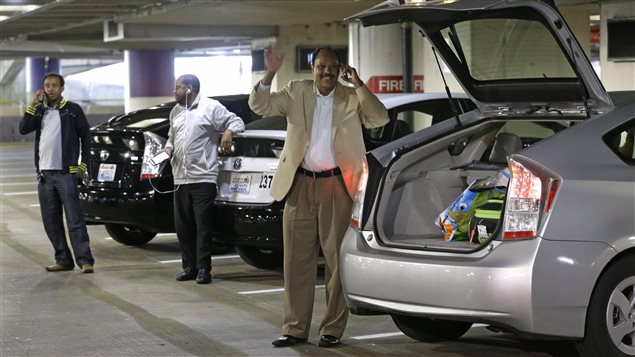Declining demand from U.S. consumers and uncertainty over the fate of the North American Free Trade Agreement (NAFTA) are raising questions about the future prospects of Canada’s auto industry, according to a new report by the Conference Board of Canada.
Following a 3.8 per cent drop in 2017, industry production will rise by just 0.8 per cent this year, according to the report entitled Canadian Industrial Outlook: Canada’s Motor Vehicle Manufacturing Industry.
The Conference Board of Canada economist Sabrina Bond said new vehicle sales in the United States are coming off the peak reached in 2016 as pent-up demand from the aftermath of the global recession is satisfied.
“Going forward, demand for new vehicles will continue to ease as a result of the aging of the Baby Boom population in the U.S. and Canada and urban millennials’ purchasing fewer vehicles due to ready access to ride-sharing,” Bond said in a statement.
“Meanwhile, the industry will have to contend with potential changes to rules of origin in the existing NAFTA, which could take a sizable bite out of Canadian auto exports and investment in manufacturing.”
Millennial disruptors

While broad economic conditions south of the border – low fuel prices and interest rates, falling unemployment and a strong U.S. dollar – will continue to support the Canadian auto industry, lower-than-average vehicle ownership rates among millennials and seniors will ease U.S. vehicle sales going forward, the report says.
With improving vehicle technology extending the average length of car ownership and the proliferation of ride-sharing services, millennials buy fewer new vehicles than those aged 35 to 54.
The report expects light vehicle sales to average just above 16 million units per year over the next five years, after reaching a high of 17.46 million units in 2016.
Bill Murnighan, director of research at Unifor, the trade union representing Canadian autoworkers, said they expect some softening of demand and production in Canada but not a dramatic gearing down of the industry or decline.
“Our understanding and forecasts we see that Canadian auto production will be roughly the same next year and the year after as it was this past year, perhaps, down just a few percentages,” Murnighan said.
“There is some slowing in the market and that is a little bit of a concern but not unexpected and at the moment we are not anticipating or foreseeing and dramatic decline in employment.”
Trade uncertainty

While Canada has benefited from strong vehicle purchases from the U.S., its dependence on the American market leaves the sector vulnerable to the vagaries of trade negotiations, the report warns.
Preliminary indications are that the U.S. will seek to adjust the current rules of origin for autos and parts in the ongoing NAFTA renegotiation with Canada and Mexico.
“We are very concerned about the negotiations of NAFTA as it will have an impact on the auto industry,” Murnighan said. “We believe that there are important changes that need to be made to ensure a fairer balance of trade between the three countries and ensure that the benefits of the industry are shared as well.”
Currently, light autos, engines, and transmissions must have 62.5 per cent North American content before they can benefit from duty-free access to NAFTA markets. The Trump administration wants to raise the threshold to more than 70 per cent, with an added requirement that anywhere between 35 and 50 per cent of content be made in the U.S., the report says.
Murnighan said Unifor believes that increasing North American automotive content is just a small part of the solution for the problems plaguing the industry.
Trying to fix what’s wrong with NAFTA by just adjusting the content rules is missing the main point that United States essentially has an open door for imports from around the world, Murnighan said.
There is also no mechanism for ensuring some balance in trade between Canada and the U.S., which have a largely balanced trade, and Mexico, which is rapidly increasing its level of production and exports to both U.S. and Canada, Murnighan said, echoing some of the concerns raised by the Trump administration.
“The lack of balance within North America is a major concern and content rules are unlikely to be a significant means of addressing it,” he said. “Both Canada and the U.S. – governments and autoworkers – understand the challenge that is a deeply unbalanced trade relationship within North America in favour of Mexico, and also a deeply unbalanced trade relationship between North America and the rest of the world.”
However, even if the trade status-quo remains intact, Canada’s auto exports will flatten through the medium term in response to more subdued U.S. vehicle consumption patterns.
In all, the report expects the Canadian auto industry’s financial performance to weaken in 2018. Industry pre-tax profits are expected to drop from $1.9 billion in 2017 to $1.6 billion in 2018, with both revenues and costs dropping. However, the decline in revenues is expected to outpace the drop in costs, leading to weaker profitability, the report says.
“Now is certainly the time for both the federal government and provincial governments to step up their automotive policy supports in this period of uncertainty,” Murnighan said.







For reasons beyond our control, and for an undetermined period of time, our comment section is now closed. However, our social networks remain open to your contributions.